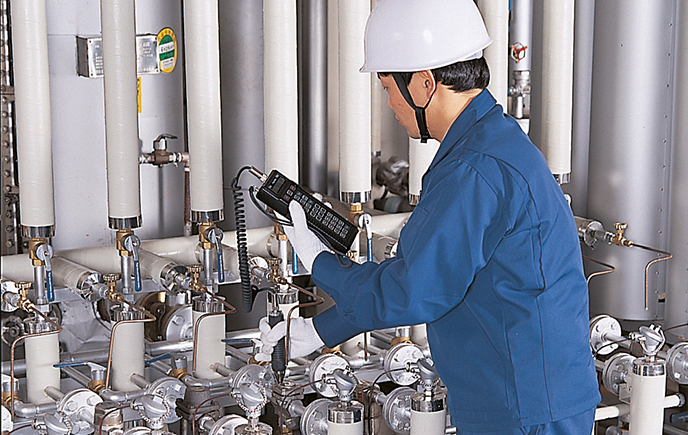Full steam ahead - Scottish distillery with Grundfos
There’s steam and there’s high-quality steam. There are pump solutions and intelligent pump solution...
ERIKS have caught up with TLV Euro Engineering who shared five best practice steps that industrial business can take to improve their steam plant efficiency and save on the bottom line.

In many industries, steam plants now provide a crucial energy source, delivering reliable high-quality steam for the production process. However, rising gas prices and a need to reduce CO2 emissions has led to an increasing focus on the efficiency of steam plants. While there are many ways to improve efficiency they often involve considerable investment so before embarking on any large capital project, it is worth taking a closer look at the system itself by following these five steps to improve efficiency.
It is a good idea to estimate the cost of steam generation beforehand. All the calculations quoted here are based on a plant running 24/7 for 50 weeks a year, with a steam cost of GBP 20.00. For the best results, you need to ascertain the steam cost for your site.
First, a steam trap survey can easily identify leaking or faulty traps and provide significant potential savings. For example, it is not unusual for a site with 100 steam traps to find that 15-20 are leaking. A leaking steam trap could be losing you up to GBP 2,000 per year, so the potential annual loss - and therefore the potential saving - is in the region of GBP 35,000. Replacing the traps could provide payback in months rather than years. The same survey will also identify blocked traps, which can significantly reduce process efficiency, affect steam quality, and impact on the safety of the system.
Second, as the cost of steam rises with the increase in energy prices, so does the value of condensate. Here are some factors to take into account when calculating the value of condensate: heat energy, water charges, the cost of water treatment, and effluent charges. Based on typical costs of GBP 3.00 or GBP 4.00 per ton, a small steam-powered process discharging 1,000 liters of unrecovered condensate per hour would be costing approximately GBP 24,000 per year.
In contrast, the savings made by the installation of an efficient condensate return system with associated pipe modifications could lead to a positive return on investment less than six months down the line.
Third, although the cost of insulation can be high, the potential savings can deliver a rapid return on investment. Programs are available to calculate the standing losses from un-lagged steam pipes. All that is required to establish a realistic estimate is a simple site survey to identify piping size and steam pressure. As an example of the benefits, a process running 24/7 (10barg, 20C) can reach annual losses of up to GBP 4,500 for just 10m of un-lagged internal pipe.
Fourth, a 1mm hole in your steam main could be costing GBP 500 per year. A 2in isolation valve leaking steam could be costing GBP 750 per year. Walk around your steam system and closely inspect valve stems, safety valves, flanges and unions for steam leaks. You will probably be surprised how many you find.
Finally, steam metering itself will not directly save energy, but for good housekeeping it is an essential discipline. Metering from the boiler house provides the most accurate steam consumption statistics for a typical working day, and can also be a useful troubleshooting tool. For example, a rise in oil consumption without a corresponding rise in steam production can point to a problem with the boiler.
There are potentially thousands of pounds (£) of savings to be made by following these five simple steps. For the best results you may need the help of a steam specialist company, but elements of a preliminary audit can be carried out in-house. Based on the findings, a steam management program should be developed and established to help improve the system.
Get the latest updates from ERIKS including:
Choose any or all of these via the ERIKS Subscription Centre!
Our Know+How brings together the best of the latest Know+How Hub articles in one easy to digest magazine, covering the following topics:
That's why its the leading magazine for maintenance engineers from ERIKS.
Want Know+How Magazine delivered direct to your door? Visit the ERIKS Subscription Centre to opt-in!
Take a look at our latest updates...
There’s steam and there’s high-quality steam. There are pump solutions and intelligent pump solution...
Looking for a custom Product quote? Need an answer to a Technical question? Looking for Careers/HR support? Want to work with us? Interested in our Digital Trading solutions? Have a finance question? Send us your enquiry and a member of the ERIKS team will be with you quickly.
We strive to deliver exceptional quality service and products. As part of this goal, we encourage customers to submit feedback on their experiences so we can resolve any issues and concerns.
At ERIKS we strive to deliver the best quality service and products. As part of this goal we encourage customers to submit feedback on their experiences so we can resolve any issues and concerns.
Call us: +441215086000
